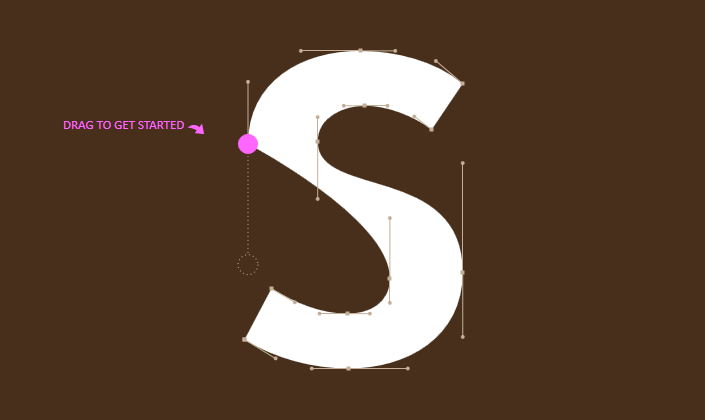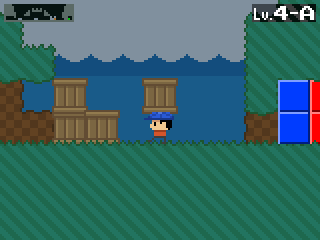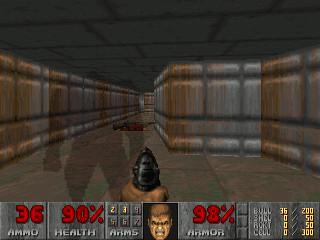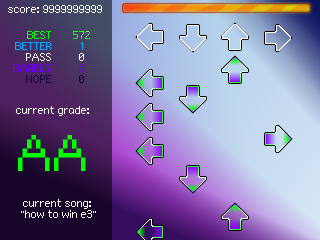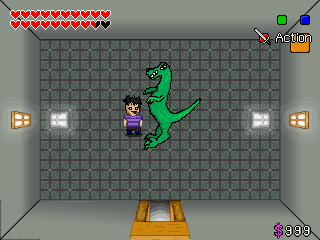MIT Laboratory for Automation, Robotics, and Society
Directed by David MindellVisualization Design: Yanni Loukissas
Research Assistant: Francisco AlonsoThe Apollo 11 visualization draws together social and technical data from the 1969 moon landing in a dynamic 2D graphic. The horizontal axis is an interactive timeline. The vertical axis is divided into several sections, each corresponding to a data source. At the top, commentators are present in narratives from Digital Apollo and NASA technical debriefings. Just below are the members of ground control. The middle section is a log-scale graph stretching from Earth (~10E9 ft. away) to the Moon. Utterances from the landing CAPCOM, Duke, the command module pilot, Collins, the mission commander, Armstrong, and the lunar module pilot, Aldrin, are plotted on this graph. The graph is partially overlaid on a composite image of the lunar surface. Data from the Apollo computer systems, the DSKY (display/keyboard interface to the Apollo computer) and the AGC (Abort Guidance Computer) occupies the bottom of the visualization. Each circle on the graph represents an utterance by one member of the team or ground control, with the size of the circle proportional to the length of the utterance. Lines connecting subsequent utterances represent inquiries and responses between team members. Specific events are labeled, such as computer program changes and program alarms. During a real-time playback, the white line moves across the horizontal axis as audio plays, and the crew’s specific utterances are spelled out to the right. In sync with the human dialog, the AGC and DSKY display values and modes. In these dynamics, one can trace the trading of workload and authority during the critical final phases of landing, and how that workload was offloaded from the lunar module to Houston in response to the program alarms.
Ez azoknak szól, akik – hozzám hasonlóan – sokat szoptak már a hyperref csomaggal.
Szeptemberben volt egy alkalom, amikor fekvő A4-es méretű lappal kellett dolgoznom. Ez eddig nem ügy, amíg később rá nem jöttem, hogy kell nekem hyperref is. Betöltöttem hát. Ekkor borult fel minden, mert az elkészült oldal valami félig fekete, álló A4-es dokumentum lett. Alászálltam a net legmélyebb bugyraiba, ahol megtaláltam a választ a kérdésemre. Először töltsük be a hyperref csomagot a setpagesize=false opcióval és csak aztán a geometry-t.
|
1
2 3 |
\documentclass{memoir}
\usepackage[setpagesize=false, xetex]{hyperref} \usepackage[a4paper, landscape, xetex]{geometry} |
Ma pedig nekiálltam review-olni egy egy évvel korábbi projektemet. Egy darab kommentet nem írtam hozzá, úgyhogy ezzel el is ment a napom nagy része. Aztán ugyanabba a problémába ütköztem, amibe már egy évvel ezelőtt is. Vagyis a kész PDF-ben az összes bookmarkot egyetlen láncba fűzve, nem pedig szép fát találtam. Újfent alászálltam a mélybe, és egy Debian maintenance levlistán találtam meg a megoldást.
“magyar.ldf” redefines most of the essential commands
that also hyperref must change. A patch would have to
include many of hyperref/driver stuff/nameref, adopted
to magyar.ldf.
Alatta pedig ott volt egy gyönyörű makró:
|
1
2 3 4 5 6 7 8 9 10 11 12 13 14 15 16 17 18 19 20 21 22 23 24 25 26 27 28 29 30 31 32 |
\makeatletter
\let\Hy@magyar@saved@refstepcounter\refstepcounter \addto\extrasmagyar{% \let\H@refstepcounter\refstepcounter \let\refstepcounter\Hy@magyar@saved@refstepcounter \expandafter\renewcommand\expandafter*\expandafter\@ssect \expandafter[\expandafter 5\expandafter]\expandafter{% \expandafter\def\expandafter\@currentlabelname\expandafter{% \expandafter #\expandafter 5\expandafter }% \@ssect{#1}{#2}{#3}{#4}{#5}% \phantomsection }% \expandafter\Hy@magyar@patch@sect\expandafter{% \@sect{#1}{#2}{#3}{#4}{#5}{#6}[{#7}]{#8}% }{#1#2#3#4#5#6[#7]#8}{#2}{#7}% } \def\Hy@magyar@patch@sect#1#2#3#4{% \def\@sect#2{% \setcounter{section@level}{#3}% \def\@currentlabelname{#4}% \ifnum #3>\c@secnumdepth \Hy@GlobalStepCount\Hy@linkcounter \xdef\@currentHref{section*.\the\Hy@linkcounter}% \fi #1% \ifnum #3>\c@secnumdepth \Hy@raisedlink{\hyper@anchorstart{\@currentHref}\hyper@anchorend}% \fi }% } \makeatother |
Őszintén megmondom, még nem néztem át tüzetesebben, de eddig minden gondomat megoldotta.
This is my submission for the Show Off Your Skillz in TeX & Friends Contest at TeX.sx.
Full LaTeX source and description coming soon below the picture.

|
1
2 3 4 5 6 7 8 9 10 11 12 13 14 15 16 17 18 19 20 21 22 23 24 25 26 27 28 29 30 31 32 33 34 35 36 37 38 39 40 41 42 43 44 45 46 47 48 49 50 51 52 53 54 55 56 57 58 59 |
% TypoTux
% Created by szantaii % Compiled with pdflatex using TeX Live 2011 % % Use it as you like, but please send me an e-mail if you do. \documentclass[10pt,a4paper]{article} % Specifying input encoding \usepackage[utf8]{inputenc} % Using the TikZ library for drawing Tux, and clipping \usepackage{tikz} % Loaded for unnumbered captions \usepackage{caption} % For inserting lorem ipsum text \usepackage{lipsum} % Setting baselines smaller \setlength{\baselineskip}{6pt} \begin{document} %\lipsum[1] \begin{figure}[h!] \centering \begin{tikzpicture}[y=0.80pt,x=0.80pt,yscale=-1, inner sep=0pt, outer sep=0pt,scale=0.25] \begin{scope}[shift={(-249.6684,-294.38903)}] %\begin{scope}[cm={{0.55569,0.0,0.0,0.55569,(249.6684,292.4824)}}] \begin{scope} % Tux's path used for clipping % Generated with Inkscape / https://inkscape.org/ % Using the inkscape2tikz extension / https://code.google.com/archive/p/inkscape2tikz/ \path[clip] (265.5000,1063.0000) .. controls (252.9000,1061.0000) and % Tux's path used for clipping cut from here because it's too long to include. % See link for full compilable source at the end of the post. % Adding lorem ipsum text using TikZ nodes, and the lipsum package \node[inner sep=0,text width=10cm] (text1) at (450,450) {\LARGE\textit{\lipsum[1]}}; \node[inner sep=0,text width=10cm] (text1) at (500,500) {\LARGE\textit{\lipsum[2]}}; \node[inner sep=0,text width=10cm] (text1) at (450,450) {\textit{\lipsum[3-4]}}; \node[inner sep=0,text width=10cm] (text1) at (500,500) {\textit{\lipsum[5-6]}}; \node[inner sep=0,text width=10cm] (text2) at (450,450) {\scriptsize\textit{\lipsum[7-11]}}; \node[inner sep=0,text width=10cm] (text2) at (475,475) {\scriptsize\textit{\lipsum[12-16]}}; \node[inner sep=0,text width=10cm] (text2) at (500,500) {\scriptsize\textit{\lipsum[17-21]}}; \end{scope} \end{scope} \end{tikzpicture} \caption*{TypoTux} \end{figure} %\lipsum[2] \end{document} |
I have always wanted to create something like this. After I read about this contest I decided to make a Tux who’s drawn by text. I chose TikZ & PGF for this purpose since it’s very powerful, and I used it several times before for path clipping.
Step-by-step description how I made this:
- Grabbed a 2D vectorized Tux image from Wikipedia.
- Removed colored and unnecessary white paths from the image, resized page with Inkscape.
- Saved the black & white image as a standalone TikZ image with Inkscape using the inkscape2tikz extension.
- Removed some unnecessary paths from the tex source file, changed path filling to clipping.
- Added nodes filled with different size of lorem ipsum text using the lipsum package. Note: this was the hardest part, because there was no other way but trying to place the text under the clip path.
- A little bit of fancying, and cleaning up.
Use it for whatever you want to, but please let me know if you do. I compiled it with pdflatex using TeX Live 2011.
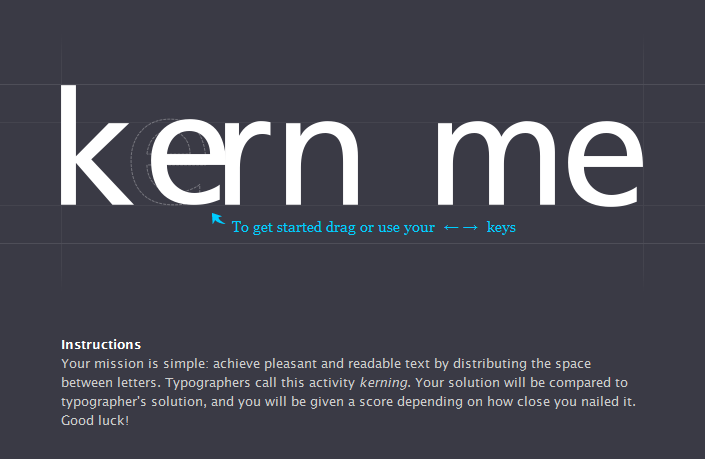
KernType is part of Method of Action, an online course to help programmers learn design.
Egészen kiváló. :)


A felső egy könyvből van, az alsót pedig én csináltam LaTeX-ben. Szerintem az enyém szebb. :) (Elnézést, ha hibás a cellulóz molekula, nem értek hozzá.)
Forrás alant, a chemfig csomag szükséges hozzá.
|
1
2 3 4 5 6 7 8 9 10 11 12 13 14 |
\setcrambond{3pt}{}{}
\setpolymerdelim{[}{]} \chemfig[][]{HO-[:15](-[:-105](-[:-195]HO)<[:15](-[:-105,0.5]-[:-75,0.75]OH)-% [:-15,,,,line width=3pt]O>[:75])-[:-15](-[:75]OH)-[:15]-[:-15]O-[:15]% (-[:-15](-[:105,0.5]-[:75,0.75]OH)-[:15]O)<[:-75](-[:-195]HO)-[:15,,,,line width=3pt]% (-[:-75]OH)>[:-15](-[:105,0.75])-[@{op,.75}:15]O-[:-15](-[:75](-[:195]HO)-[:-15]% (-[:75]OH)-[:15])<[:15](-[:-105,0.5]-[:-75,0.75]OH)-[:-15,,,,line width=3pt]O>[:75]-% [:-15]O-[:15](-[:-15](-[:105,0.5]-[:75,0.75]OH)-[:15]O)<[:-75](-[:-195]HO)-% [:15,,,,line width=3pt](-[:-60]OH)>[:-15](-[:105,0.75])-[@{cl,.25}:15]O-% [:-15](-[:75](-[:195]HO)-[:-15](-[:75]OH)-[:15])<[:15](-[:-105,0.5]-[:-75,0.75]OH)-% [:-15,,,,line width=3pt]O>[:75]-[:-15]O-[:15](<[:-75](-[:-195]OH)-% [:15,,,,line width=3pt](-[:-75]OH)>[:-15](-[:15]OH)-[:105,0.75])-[:-15]% (-[:105,0.5]-[:75,0.75]OH)-[:15]O} \makebraces[65pt,40pt]{n}{op}{cl}} |
Mert nem tudtam aludni.
Az alábbi oldal 1933 júliusában jelent meg a Popular Science című folyóiratban. Kíváncsi vagyok kinek mi jut erről eszébe. Nekem egyből az ugrott be, amit a kép alatt olvashattok. Egyébként tudom, hogy a dime tíz cent, szándékosan írtam ötöt. Olvassátok végig a bejegyzést, és rájöttök, hogy miért.

[…] Visszament a konyhába, végigkutatta összes zsebét egy tízcentes után, s mikor végre talált, beindította vele a kávéfőzőt. Beszippantva a számára teljesen szokatlan illatot, megint az órájára nézett, és meglátta, hogy letelt a negyedóra. Élénken az ajtóhoz lépkedett hát, elfordította a gombot, és kioldotta a zárat.
Az ajtó nem nyílt ki.
– Öt centet kérek – szólalt meg helyette.
Átkutatta a zsebeit. Nem talált több érmét, semmit. – Holnap megadom – mondta az ajtónak. Ismét nekifeszült a gombnak, az azonban meg se moccant. – Azt, hogy fizetek neked, egyedül a nagylelkűségemnek köszönheted – győzködte. – Senki sem kötelez rá.
– Én nem így gondolom – felelte az ajtó. – Nézzen csak bele a szerződésbe, amelyet aláírt, amikor megvette ezt a lást (sic!).
Az asztalfiókban rábukkant az okmányra. Aláírása óta sokszor idézett már belőle, különböző érveit alátámasztandó. Affene: az ajtónak a nyitódásért és csukódásért kötelező fizetség jár. Nem borravaló. […]
Philip K. Dick: Ubik
